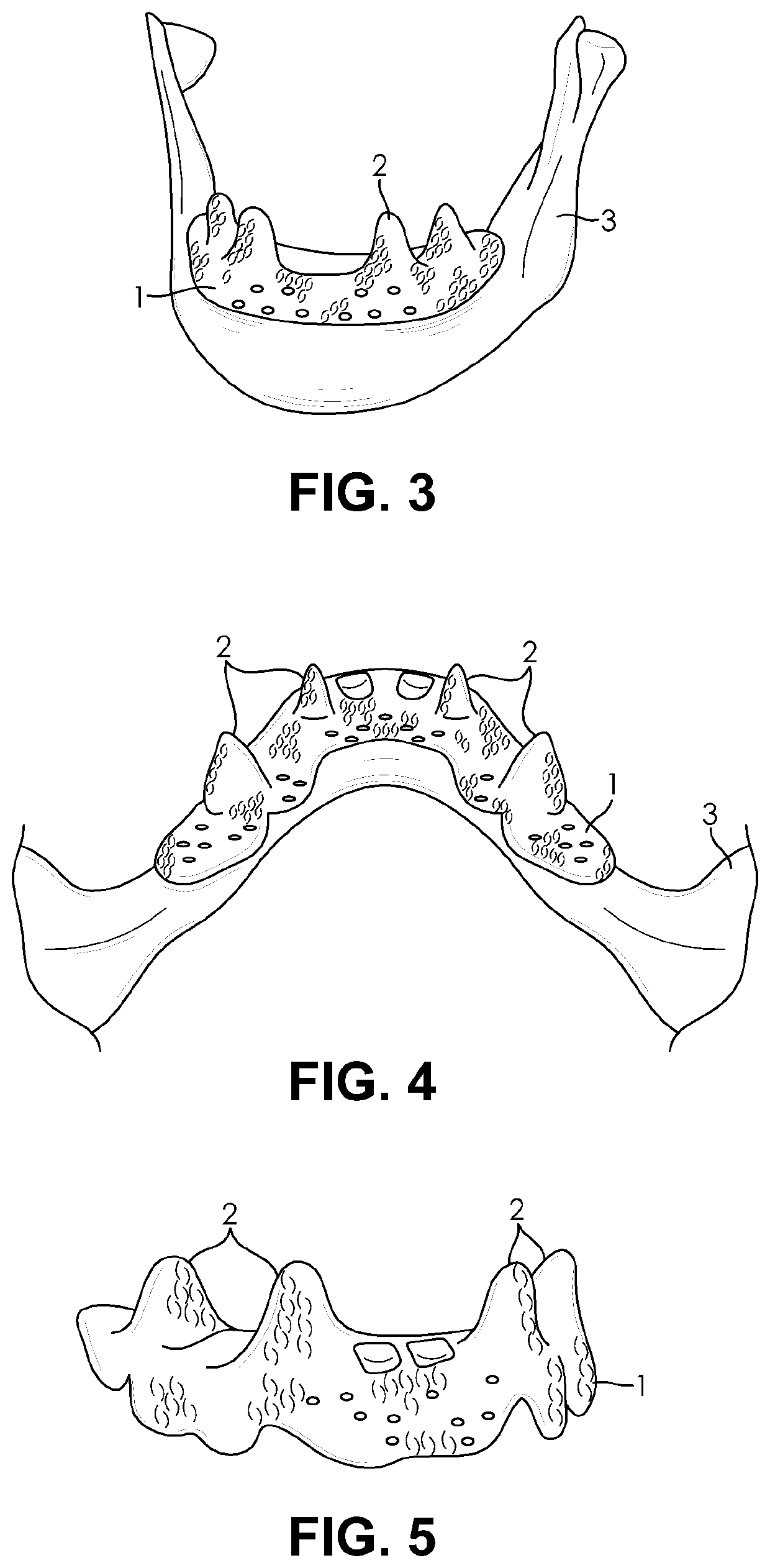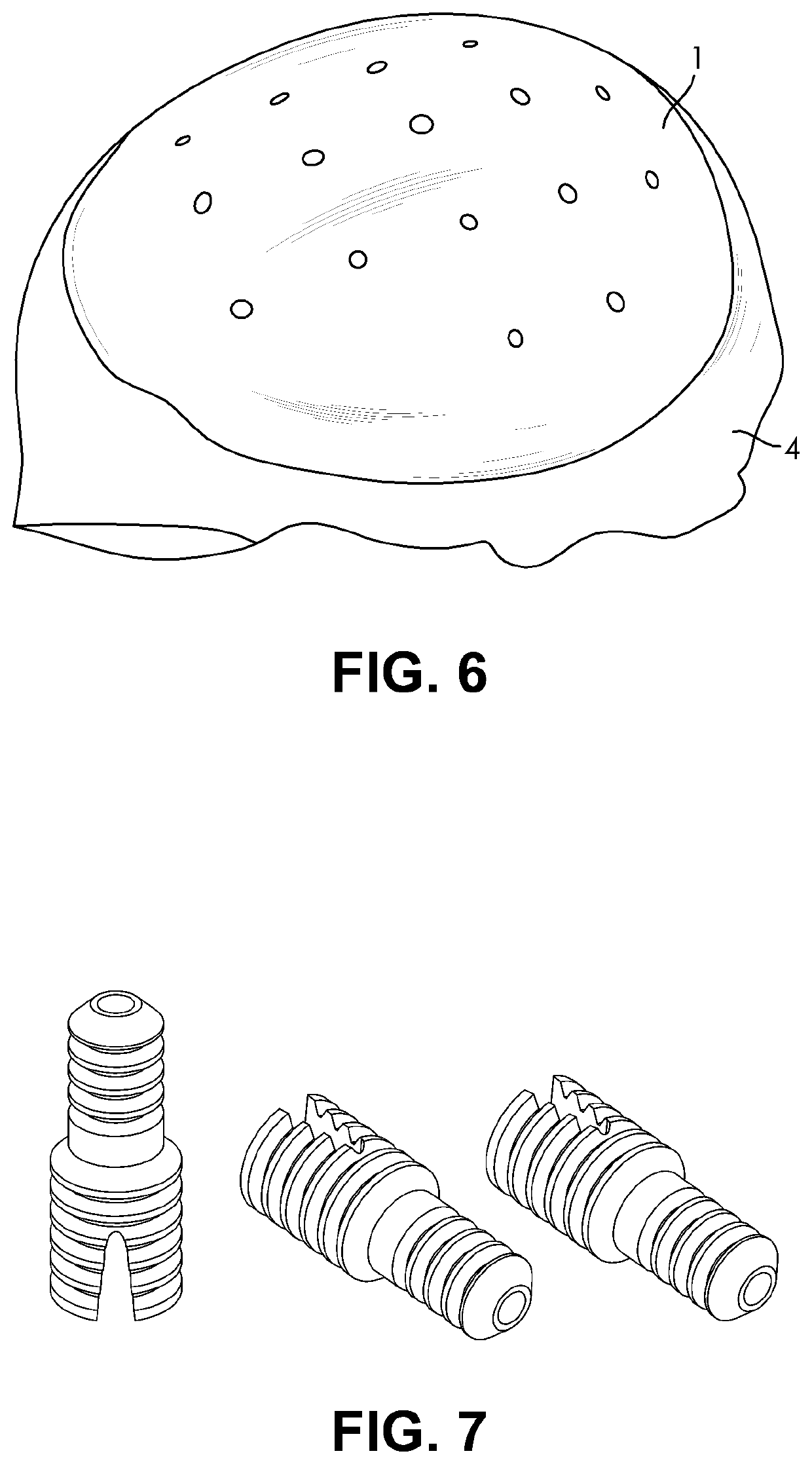Customized porous supracrestal implant and materials and methods forming them
a supracrestal implant and porous technology, applied in the field of extraosseous implants, can solve the problems of inability to heal properly, lack of stability, and rare cases of unwanted reactions of implants made of porous materials
- Summary
- Abstract
- Description
- Claims
- Application Information
AI Technical Summary
Problems solved by technology
Method used
Image
Examples
Embodiment Construction
[0052]The present invention generally relates to osseointegrated implants. In particular, embodiments of the present invention relate to extraosseous implants, for example, supra crestal implants, that are configured to substantially continuously cover the 3D topography of a top and a lateral surface of a bone, for example, a crestal and a lateral surface of the jaw. For example, the implants may be used on partially or completely edentulous jaws. Also, embodiments of the present invention relate to such implants made from a bioactive biocompatible material of suitable porosity and elastic modulus. Specifically, embodiments of the present invention relate to improved implants suitable for implantation to bone deficient in quantity or quality, such as severely resorbed jaw bone.
[0053]According to an embodiment of the present invention, the implant may be an extraosseous implant that substantially continuously covers the 3D topography of top (e.g. crestal) and a lateral surface of a t...
PUM
| Property | Measurement | Unit |
|---|---|---|
| elastic modulus | aaaaa | aaaaa |
| elastic modulus | aaaaa | aaaaa |
| elastic modulus | aaaaa | aaaaa |
Abstract
Description
Claims
Application Information
 Login to View More
Login to View More - Generate Ideas
- Intellectual Property
- Life Sciences
- Materials
- Tech Scout
- Unparalleled Data Quality
- Higher Quality Content
- 60% Fewer Hallucinations
Browse by: Latest US Patents, China's latest patents, Technical Efficacy Thesaurus, Application Domain, Technology Topic, Popular Technical Reports.
© 2025 PatSnap. All rights reserved.Legal|Privacy policy|Modern Slavery Act Transparency Statement|Sitemap|About US| Contact US: help@patsnap.com



